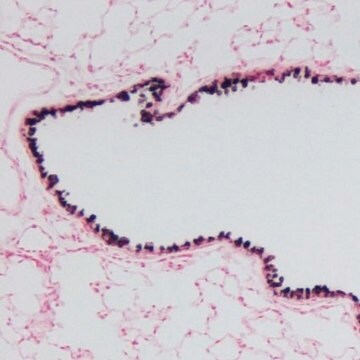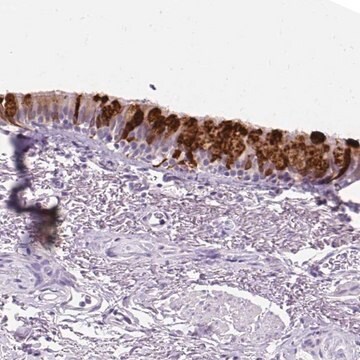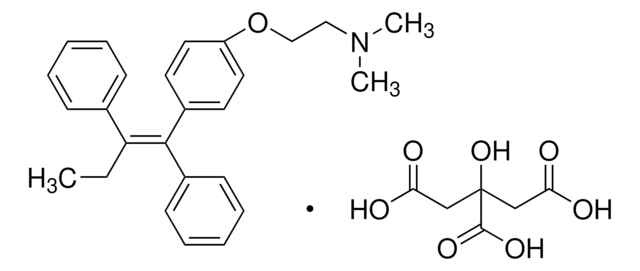ABS1673
Anti-Uteroglobin
serum, from goat
Synonim(y):
Clara cell phospholipid-binding protein, CCPBP, Clara cells 10 kDa secretory protein, CC10, PCB-binding protein, Secretoglobin family 1A member 1, Blastokinin
About This Item
Polecane produkty
pochodzenie biologiczne
goat
Poziom jakości
forma przeciwciała
serum
rodzaj przeciwciała
primary antibodies
klon
polyclonal
reaktywność gatunkowa
mouse
reaktywność gatunkowa (przewidywana na podstawie homologii)
rat (based on 100% sequence homology)
metody
immunofluorescence: suitable
immunohistochemistry: suitable
western blot: suitable
numer dostępu NCBI
numer dostępu UniProt
Warunki transportu
ambient
docelowa modyfikacja potranslacyjna
unmodified
informacje o genach
mouse ... Scgb1A1(22287)
rat ... Scgb1A1(25575)
Opis ogólny
Specyficzność
Immunogen
Zastosowanie
Immunofluorescence Analysis: A 1:1,000 dilution from a representative lot detected Uteroglobin in mouse lung tissue. (Courtesy of Dr.Barry Stripp at Cedars-Sinai Medical Center, Los Angeles, CA).
Immunohistochemistry Analysis: A representative lot detected Uteroglobin in adult mice alveoli (Rawlins, E.L., et. al. (2009). Cell Stem Cell. 4(6):525-34).
Signaling
Jakość
Western Blotting Analysis: A 1:500 dilution of this antibody detected Uteroglobin in 10 µg of mouse lung tissue lysate.
Opis wartości docelowych
Postać fizyczna
Przechowywanie i stabilność
Inne uwagi
Oświadczenie o zrzeczeniu się odpowiedzialności
Nie możesz znaleźć właściwego produktu?
Wypróbuj nasz Narzędzie selektora produktów.
Kod klasy składowania
12 - Non Combustible Liquids
Klasa zagrożenia wodnego (WGK)
WGK 1
Certyfikaty analizy (CoA)
Poszukaj Certyfikaty analizy (CoA), wpisując numer partii/serii produktów. Numery serii i partii można znaleźć na etykiecie produktu po słowach „seria” lub „partia”.
Masz już ten produkt?
Dokumenty związane z niedawno zakupionymi produktami zostały zamieszczone w Bibliotece dokumentów.
Nasz zespół naukowców ma doświadczenie we wszystkich obszarach badań, w tym w naukach przyrodniczych, materiałoznawstwie, syntezie chemicznej, chromatografii, analityce i wielu innych dziedzinach.
Skontaktuj się z zespołem ds. pomocy technicznej






